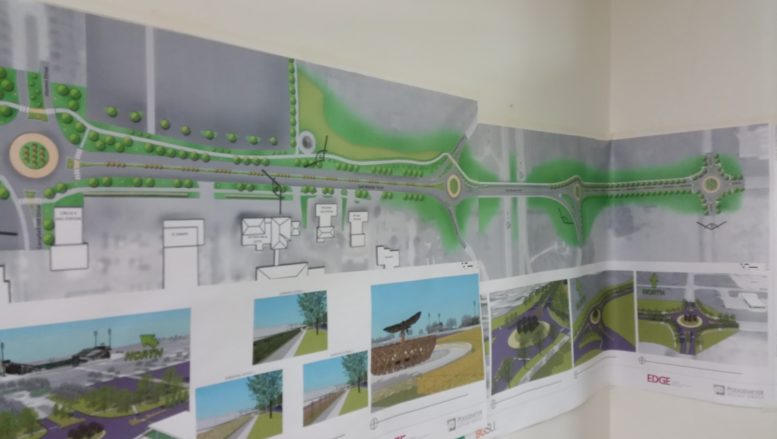By JAN LARSON McLAUGHLIN
BG Independent News
One citizen asked Bowling Green City Council Monday evening to put the brakes on plans for roundabouts in the community.
“I don’t like roundabouts,” said Bud Henschen. “I don’t see any good with them.”
And if the city really wants a roundabout, it should try one out in a place less likely to cause congestion, he said. The rotaries don’t belong at the busy intersections of Interstate 75 and East Wooster Street, he said, where traffic is bound to back up.
Henschen’s concerns were based on City Council’s second reading Monday of an ordinance authorizing ODOT to put two roundabouts at the I-75 intersections on Wooster Street in 2018.
The work will include upgrades to the intersections with two roundabouts “to enable continuous and safer traffic flow, pedestrian access across the bridge deck and aesthetic improvements that will be visible from I-75 as well as those entering the community.”
ODOT has allocated $750,000 in safety funding for the construction, and has agreed to fund the entire cost for engineering and construction administration. The city will be responsible for the remaining costs.
That brings up Henschen’s second complaint about roundabouts – the cost.
“Taxpayers of Bowling Green are saturated with taxes,” he said, listing off possible plans in the community for a new school, new city building – and now roundabouts. “Some place it’s got to stop. You’re going to tax people right out of this community.”
Henschen said big rigs won’t be able to use the roundabouts, and working people will leave the community.
But council member Sandy Rowland responded, saying studies show roundabouts to be much safer, to cause less traffic congestion, and to cost less than standard intersections which require traffic signals.
The city is also considering two other possible roundabouts for the East Wooster Street corridor – at Dunbridge Road and Campbell Hill Road.
Surveys submitted earlier this year by Bowling Green residents, about the proposed East Wooster corridor work, showed a great deal of suspicion about the roundabouts. But city officials believe that once citizens realize the safety benefits, and experience the ease maneuvering around them, that most motorists will be sold.
The city administration has posted the following information on roundabouts on the city website in an effort to answer common questions about the rotaries.
- Roundabouts are designed to be safer and more efficient than a traditional intersection. The design of the roundabout creates a low speed (20-30 mph) environment and prevents high angle crashes such as “T-bone” crashes. Low angle, low speed crashes tend to be less severe than higher angle, high speed crashes.
- Roundabouts are more efficient. Vehicles are able to move more quickly through the intersection because of the “yield at entry” – drivers only have to watch for traffic from the left, and if there is an adequate gap available, they can enter the intersection without stopping. Once in the roundabout, drivers have the right-of-way, so they will not have to stop or yield to exit. If the driver does need to yield at entry to traffic inside the roundabout, their delays are brief and typically less than the time they would have been delayed at a traffic signal.
- The design makes room for semi-trucks. Incorporated into the design of roundabouts is something called a “truck apron.” The truck apron is the area between the central island and the roadway that is mountable by larger vehicles but not used by passenger vehicles. Typically this area is concrete versus the roadway which is asphalt.
- According to the U.S. Department of Transportation Federal Highway Administration, roundabouts reduce the types of crashes where people are seriously hurt or killed by 78-82 percent when compared to conventional stop-controlled and signalized intersections.

